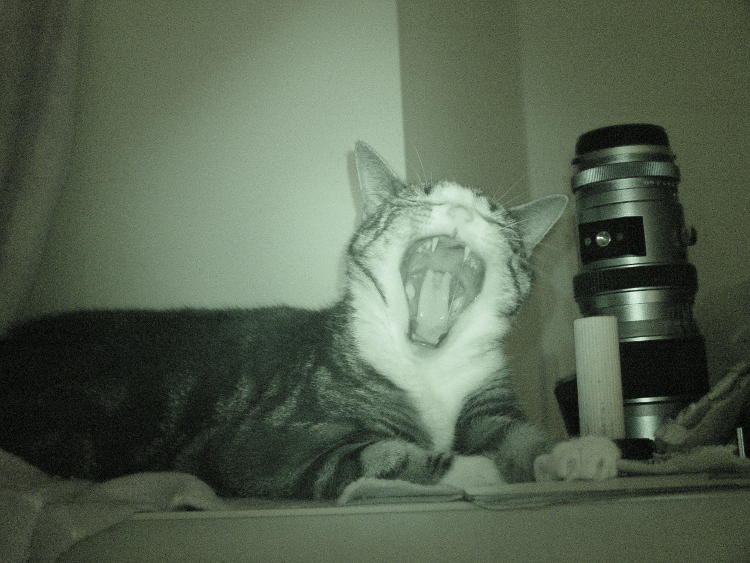Just so you know, today is the 4th anniversary of Philae touching down (bouncing repeatedly off of) comet C67/P Churyumov-Gerasimenko – I say this so you have time to make dinner plans.
I keep thinking that I’m past the busy spell and can finally start posting a bit more regularly, but this has yet to be proven. Still, I’ve got a little time today, even if I have no recent photographs to pass along, so while my gut is playing games, I’ll try to tackle one that’s been sitting in the background for a little while now. In fact, during a quiet spell I actually attempted a little work on this while in Ohio, but didn’t get very far. At the same time, Halloween produced another post idea, and here we are twelve days past that and no closer to it than before.
I’ll use this opportunity to briefly touch on the initial reactions to the photo exhibit. First off, the staff at the Visitors Bureau seemed to approve, and at least one person there mentioned their favorites. When the 2nd Friday Art Walk arrived, we had a small collection of visitors – more than normal, I’m told – but the night was chilly and drizzly, so not conducive to prowling around downtown for the sake of art. But overall, the response was pretty positive, I have to admit; there were the typical and expected responses of, “Very nice,” which I usually take to mean, “Ehhhh,” but that came from two couples, while everyone else seemed quite enthusiastic and complimentary, and honestly so (if I’m any judge, anyway – we all know how weird I am.) People seemed quite taken with many of the images, and I have a couple of new potential students that may arise from the show, which has only been up a week so far. Most curious were the comments, multiple times, that the ‘creepier’ subjects were the favorites; two people admitted to being big herpetology fans (so, lizards and frogs,) while another would have liked to have seen my spider photos. This is amusing to me, because The Girlfriend and I specifically chose to limit such photos, concentrating more on scenic and Carolina-themed images to fit in with the Visitor Bureau vibe, as well as avoiding the kind of subjects that people might find icky. Me being me, I was not about to eradicate all of the creepy subjects (and I did pick the more fartistic compositions of such,) but I’m entertained by the idea that I might have gotten away with more.
Anyway, on to the main subject.
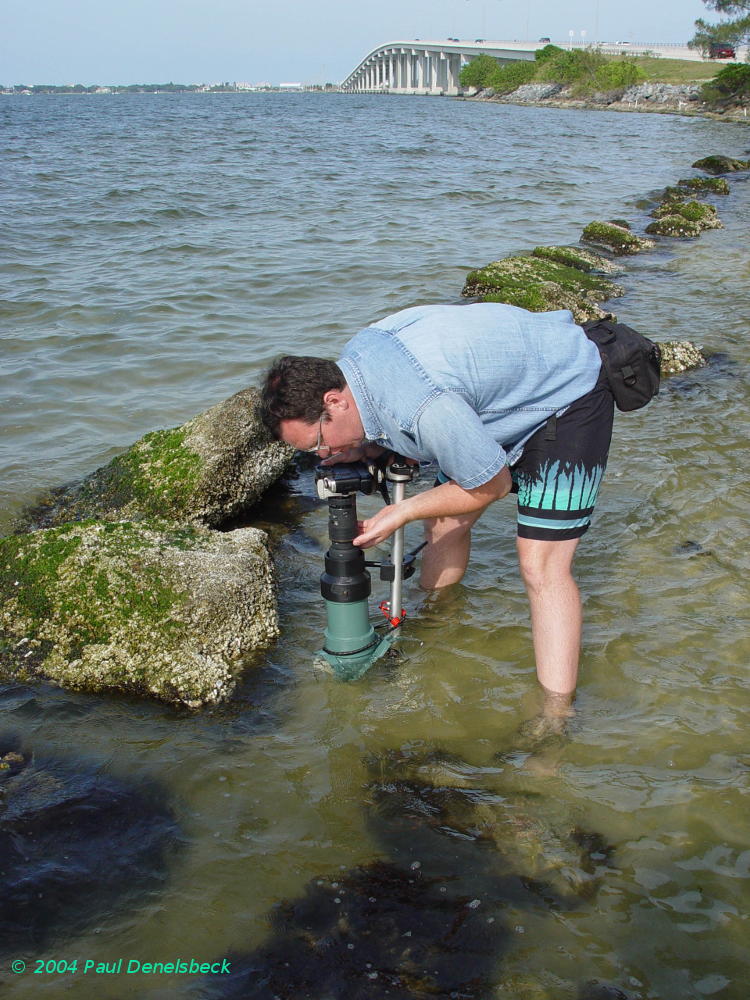
I had a project that went through multiple stages over a period of many years, from idle conception to working model, which you see here (that’s me without the beard, right there in my old haunt of the Indian River Lagoon in Florida, with the causeway in the background.) Basically, it was a reverse-periscope for photographing aquatic subjects right in their own front yard, or, uh, whatever. The body of it is that green portion with the black collar, attached to a monopod that also supported the camera in a precise position in relation to the periscope. It was all carefully planned to use the Sigma 105mm macro lens, between the shape of the lenshood and the view angle of the lens itself.
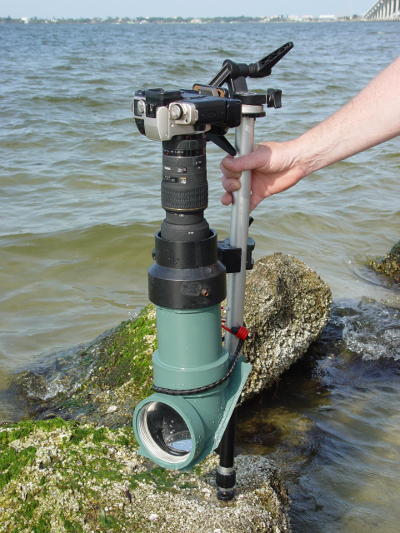 The key portion that promoted the whole thing from an idea to a work-in-progress was a front-silvered mirror, and let me explain. Most mirrors are back-silvered, the reflective surface being on the back side of the glass because it’s delicate and easy to scratch. But doing any photography, especially high-magnification photography, with one of those means there are always secondary ‘ghost’ reflections from the front surface of the glass, so the goal is the make the front surface the most reflective. I thought this was going to be a tricky thing to purchase until I came across replacement side-mirror panels in an auto parts store; the unfinished back was exactly what I was looking for, and it was available in larger pieces for truck mirrors. The remainder is all PVC pipe and a piece of clear acrylic for the viewing window. The elbow is actually a T-joint cut on a precise diagonal and sanded flat for the mirror to mount to, and I painted it all green both to reduce its obvious contrast to any undersea denizens that I got close to, and to cut the glow from reflected light onto the photo subjects and surroundings. On the black collar (a simple reducer) was mounted a 1/4-20 threaded insert for a standard tripod screw, as well as a 3/8-16 threaded stud for a mini ballhead to hold a flash unit, which could be aimed to fire into the water just ahead of the scope. Seen behind the camera is a Manfrotto 3028 head, which as far as I’m concerned is a necessary tripod head for anyone into esoteric photography experiments, since it can get into countless different angles, and was the only one that would accommodate the needs here. All submerged seams were sealed with silicone, and the inside of the whole assembly was painted deep matt black to eradicate internal reflections – before the mirror and viewport were attached, of course. Planning ahead a little can make things much easier.
The key portion that promoted the whole thing from an idea to a work-in-progress was a front-silvered mirror, and let me explain. Most mirrors are back-silvered, the reflective surface being on the back side of the glass because it’s delicate and easy to scratch. But doing any photography, especially high-magnification photography, with one of those means there are always secondary ‘ghost’ reflections from the front surface of the glass, so the goal is the make the front surface the most reflective. I thought this was going to be a tricky thing to purchase until I came across replacement side-mirror panels in an auto parts store; the unfinished back was exactly what I was looking for, and it was available in larger pieces for truck mirrors. The remainder is all PVC pipe and a piece of clear acrylic for the viewing window. The elbow is actually a T-joint cut on a precise diagonal and sanded flat for the mirror to mount to, and I painted it all green both to reduce its obvious contrast to any undersea denizens that I got close to, and to cut the glow from reflected light onto the photo subjects and surroundings. On the black collar (a simple reducer) was mounted a 1/4-20 threaded insert for a standard tripod screw, as well as a 3/8-16 threaded stud for a mini ballhead to hold a flash unit, which could be aimed to fire into the water just ahead of the scope. Seen behind the camera is a Manfrotto 3028 head, which as far as I’m concerned is a necessary tripod head for anyone into esoteric photography experiments, since it can get into countless different angles, and was the only one that would accommodate the needs here. All submerged seams were sealed with silicone, and the inside of the whole assembly was painted deep matt black to eradicate internal reflections – before the mirror and viewport were attached, of course. Planning ahead a little can make things much easier.
So with all that, did it work? Well, kinda…
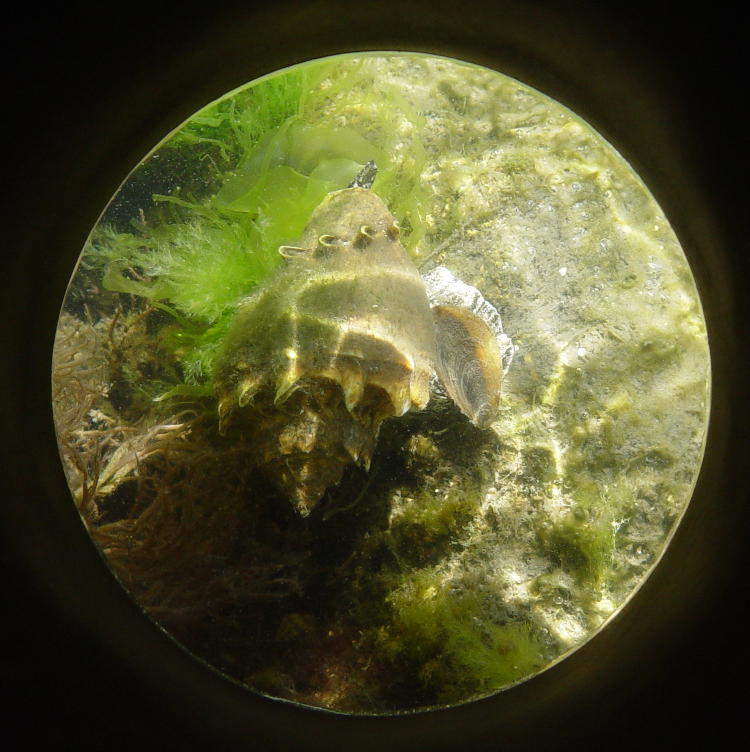
It was constructed around the 105mm macro, since that could focus closest and sharpest, but also had to have a certain length to be of any use at all – bear in mind that the longer focal length ‘true’ macro lenses hadn’t been released when I started the project, nor were they within my budget range at any point during construction, but I had the ability to use a 2x teleconverter to produce an effective focal length of 210mm, too (not used for the test shots here.) Essentially, it did work as intended, but the conditions that would permit it were pretty narrow, and at the same time I was doing aquarium photography, which was several times easier and more versatile. Obviously, one had to either cope with a circularly vignetted image, or have enough magnification to completely overlap the rectangular photo frame.
[By the way, that’s a king’s crown conch, Melongena corona, in that shot, not a true conch but a sizable carnivorous snail instead, and not something that you want to step on, because their shells are fairly sharp and incredibly durable. This specimen is probably 5-6 cm in length, and this image was taken with the Sony F-717 instead of the Canon Elan IIe seen at top.]
More noticeable were the vagaries of use. It still had to be pretty close to a subject, so one that wouldn’t spook too easily. Often, this meant something resting on the bottom, thus angles became an issue (especially since I was trying not to drive the scope down into the sand and shells.) And within these parameters, even a flash unit was going to provide more top light than frontal. So it didn’t see much use. I did make a straight unit though, just a tube with a port on the end, for shooting more-or-less straight down into the water, and this might eventually see some use again (though I’ll have to rebuild it, since I discarded both during a move, being the worse for wear in the intervening years.)

This was the first of the tests, and an amusing one at that. I was using the pond behind the apartment complex, first just for water tightness and methods of stabilizing – I will note that any such device will be buoyant, trying to push back to the surface, enough to potentially tip over a tripod, which is why I switched to a monopod that I could actively press down, and also move a lot easier. But once everything seemed kosher, I needed something to photograph, within a very short distance of the viewport, and so I cheated a bit. I made up a collection of tiny breadballs and began dropping them in front of the periscope to coax the minnows within range, which worked pretty damn well – there are roughly thirty within the narrow field of view here. This was before the scope was painted so I think some of the light is sunlight reflected from the white surfaces.
But as I was working on the support rig and the depths and all that, I was out there barefoot sprawled by the water’s edge, and eventually stretched one foot out into the water for better bracing. After a moment or so I felt a curious tickling, and looked down at my foot to see what was happening…
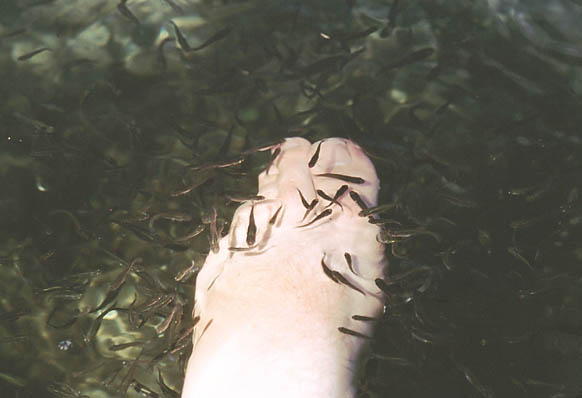
As you can see, I’m lucky to still be here, and walking unassisted to boot. The hazards of nature photography abound…
[Yes, that’s a fanny pack in the topmost photo – calm down. It worked a hell of a lot better for wading and biking than anything else, including a backpack that has to be taken off to access.]




















































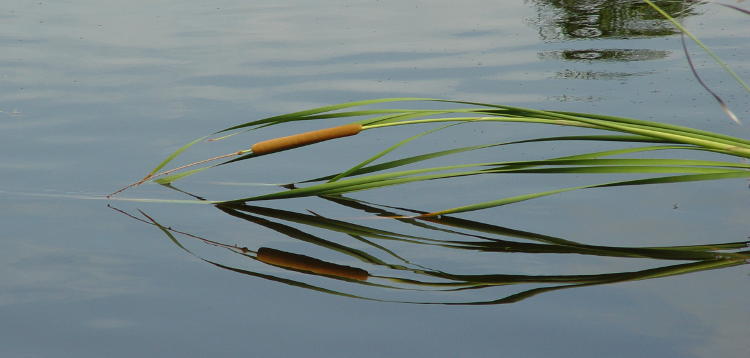

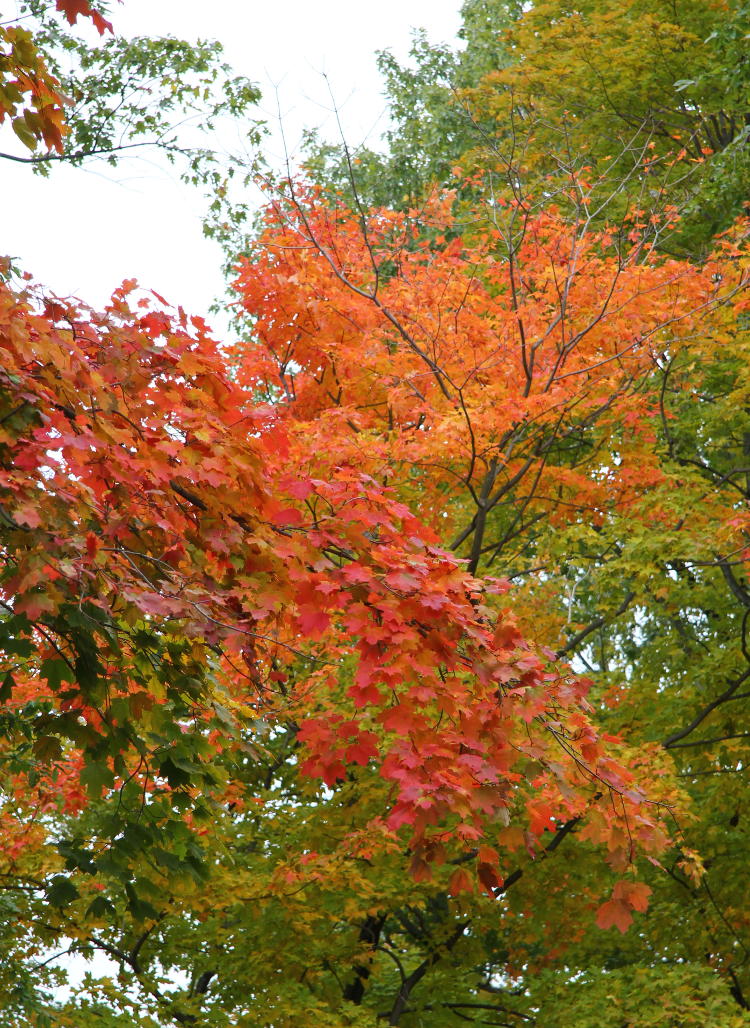

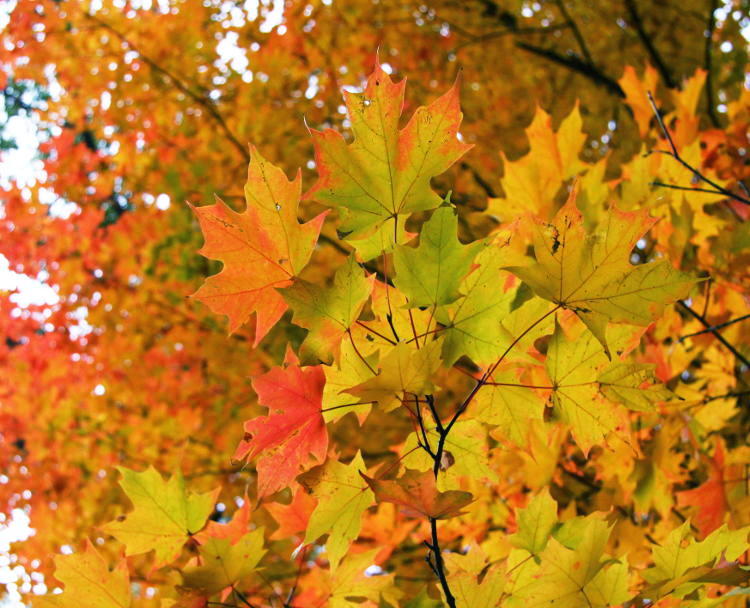

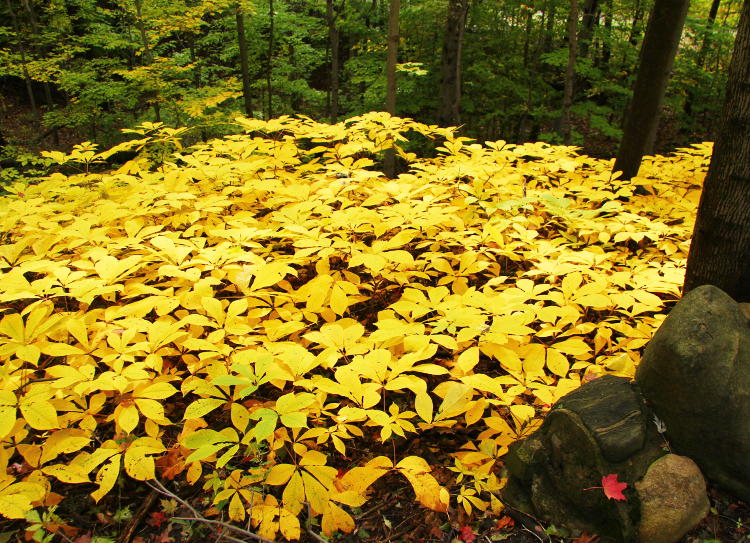
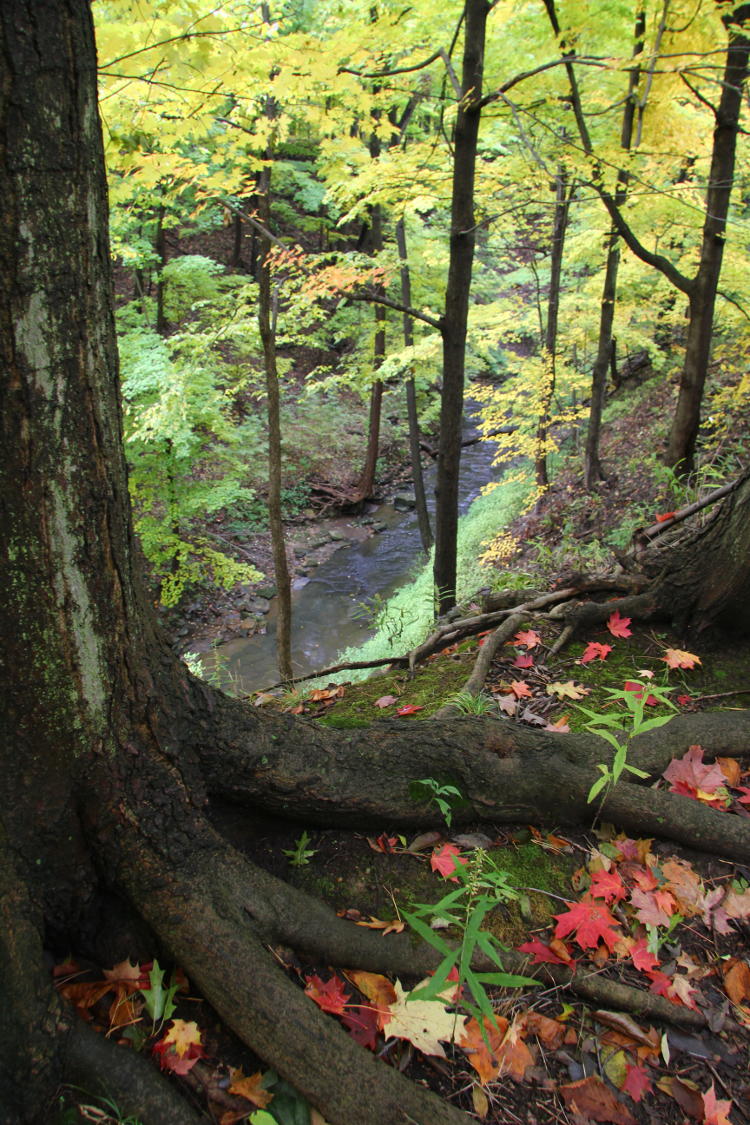
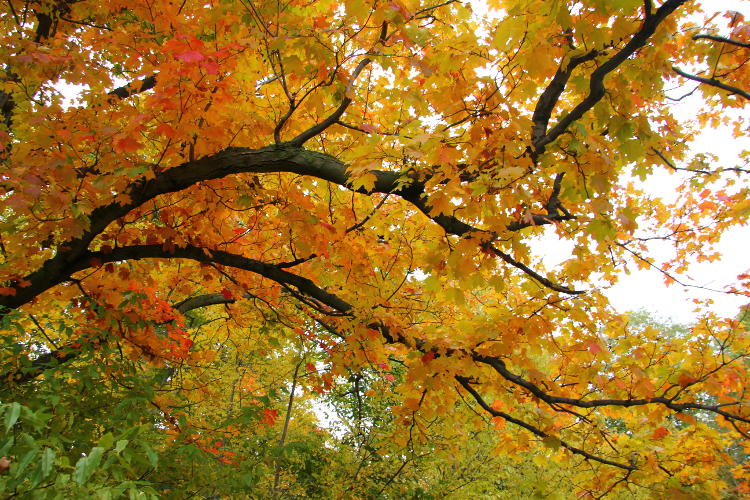
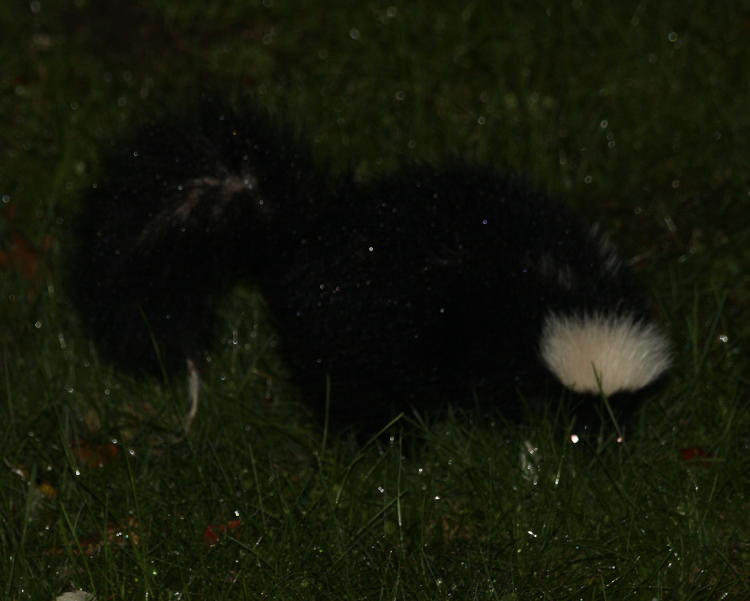
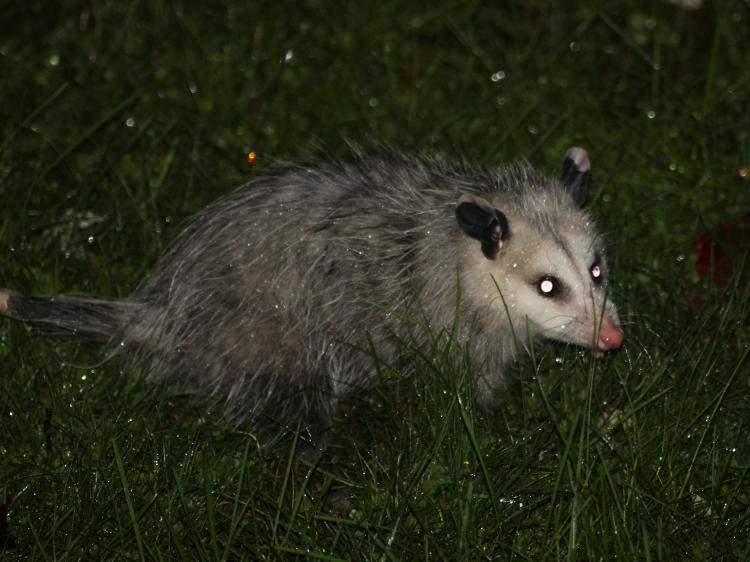
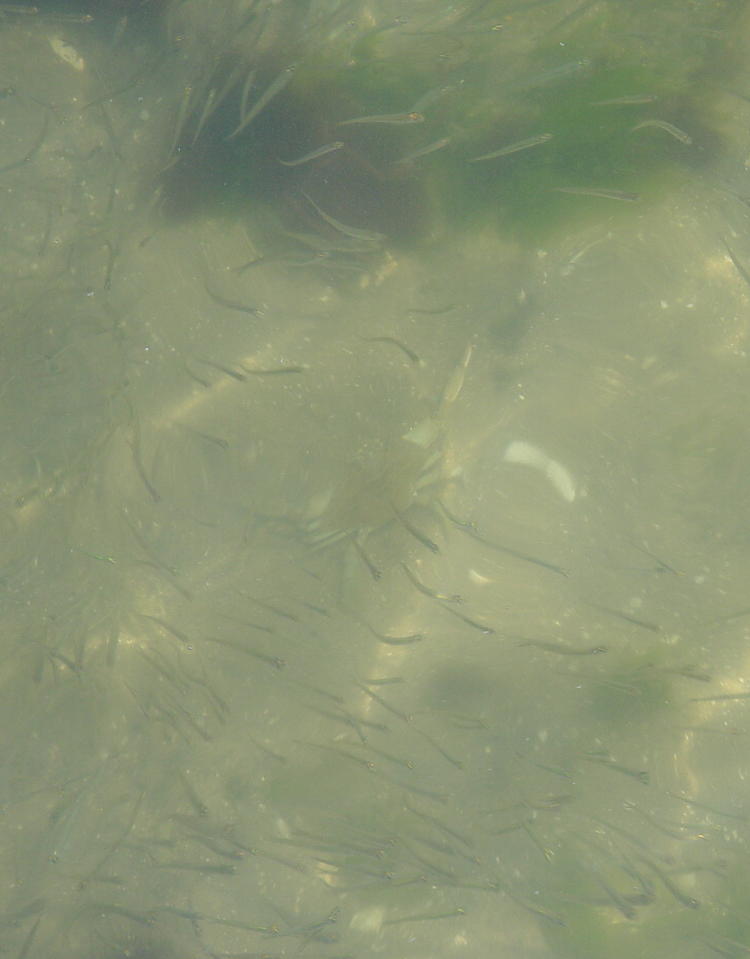



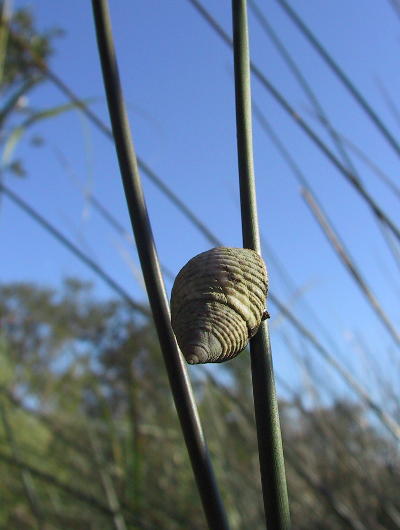 [Yawn] Yeah, sorry, we’re back in the Invertebrates folder again, which certainly got off to a slow start; even now, I don’t add a lot to it, but back then I could go a couple of years without getting any photos of a snail or slug (which might have been a good thing, considering what I
[Yawn] Yeah, sorry, we’re back in the Invertebrates folder again, which certainly got off to a slow start; even now, I don’t add a lot to it, but back then I could go a couple of years without getting any photos of a snail or slug (which might have been a good thing, considering what I 